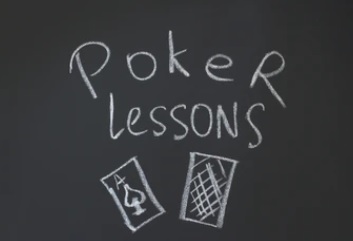When you play a game like limit hold’em, or any other form of poker for that matter, it is important to try and assess what you are trying to do before the flop and also what you will need to do post flop. So when you make a play pre-flop in limit hold’em then one of the things that you need to consider is if your hand fares well in a showdown. Limit play sees a large number of rivers when compared to its no-limit and pot-limit counterparts.
You must keep this factor in your mind at all times. Let us look at an example to highlight what I mean. It has been folded around to the cut-off in a $5-$10 six handed game and they raise to $10. You are on the button with the Qs-10c. You know that your opponent is aggressive and you ascertain that three betting even with an inferior hand could be +EV if a three bet forces the blinds to fold.
You correctly realise that this is a re-raise or fold situation. Folding is fine but the aggressive nature of the game dictates that you must hold your ground in this six handed game with the blinds coming around so rapidly. You three bet to $15 and both blinds fold and the original raiser obviously calls. Now your Q-10 is either going to connect with the flop in some way or it isn’t.
However your hand isn’t strong enough to take to the river unimproved and win. You are behind many hands that could have raised that would beat you in a showdown. Any hand that includes an ace or king beats you as do all pocket pairs. This means that you are going to have to try to win the pot before the river. If you pair the queen or the ten then you are likely going to the river but you need a plan of attack for when you don’t connect.
This is where you are going to have to know your opponent, know what their tendencies are, do they lead out or do they prefer check-raise lines? Or do they wait until the turn until they try to make a move. In a heads-up situation you can often make an aggressive move as you only have to get one player out of the hand in order to win the pot. Had a second player called your raise like the big blind then you would have to be more careful in making an aggressive post flop move as you now have two players to get through.
Now you need to know how well your opponent plays post flop and if they show respect to certain lines over others. Let us say that the flop comes 8-8-2, your opponent leads out with the Ks-Jd so they have a superior holding to you. While you do not know that your hand is second best or what your opponent holds, you at least suspect that you are behind.
But yet you cannot meekly lay down to a weak lead like this and if you raise then you are unlikely to get your opponent from the hand on the flop. You could try to leverage your opponent from the hand by raising the turn, this then presents them with having to call two big bets to see a showdown and that is difficult to do when your opponent does not even hold an ace.
Whatever line of play you choose, you must be aware that you cannot let a Q-10 go to the showdown unimproved and with no draw unless you can play the board in some way and split the pot. If you had three bet your opponent with A-Q and not Q-10 then you are far happier about seeing the river in this instance. This means that you can dovetail your post flop play around this situation.
In poker you need to think about the hand strategically from start to finish. This means what range your opponent is likely raising with, how that stacks against your range and how your hand should be played post flop. Three betting with the thought that your hand is fair and that it will prove profitable by creating dead money simply isn’t enough.
But by thinking the hand through before you see the flop and what possible situations could arise and how you combat them will allow you to see the best line of play and how to maximise your chances of winning the hand.

Submit your review | |









